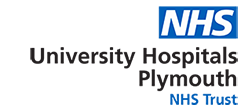Child Care After Burn or Scald Injury
Date issued: February 2025
For review: February 2027
Ref: A-516/NB/ED/Child Care After Burn or Scald Injury v2
PDF: Child Care After Burn or Scald Injury.pdf [pdf] 199KB
Your child’s dressing will protect the wound while healing takes place. To reduce the risk of infection, try to keep the dressing clean and dry.
Do not remove them unless you are instructed to do so.
Please contact the hospital or outreach nurse for advice if you are concerned.
A wound infection requires URGENT treatment.
It is important to be aware of the signs of infection:
-
High temperature
-
Skin rash
-
Vomiting and/or diarrhoea
-
Increased redness and/ or swelling
Please contact the team if you notice any of these signs or attend your local Emergency Department who will then contact the Plymouth Burns service for further advice.
Pain and itching
If your child is in pain, they may need pain relief. Paracetamol and ibuprofen are acceptable to take but please follow the instructions. If the pain does not settle with regular analgesia, please contact the hospital.
Itching can be an uncomfortable symptom during burn healing; this should improve when the burn is healed. Regular Chlorphenamine (e.g., Piriton®) and keeping the child cool can help. If the itching does not improve, please contact the burns team.
Creaming and hygiene
All healed areas will need to the washed and moisturised twice a day to prevent drying, cracking and becoming sore. You should use non-perfumed moisturiser (e.g., E45®, Aveeno®). Your will be shown how to moisturise when the burn is healed.
Scarring
After a burn injury there is a risk of scarring if healing is delayed. If the area becomes red, raised, hard and itchy scarring may be developing. If the burn took over 2-3 weeks to heal or the burn was grafted, you will be referred to our scar management team in the hospital.
If you are worried about scarring, please contact the team or the outreach nurse.
Sunscreen
It is very important that healed burn wounds are protected from the sun for least 2 years. Your child should wear factor 50 sunscreen and wear protective clothing over the injured area, as the new skin will burn quickly and may blister. If the area becomes tanned this can be permanent and blotchy.
Skin colour change
Skin colour changes are common after a burn. It may go redder when your child is hot, angry or upset and will go bluish when cold. This will settle in time.
Blisters and small wounds
All wounds and blisters are not uncommon on newly healed areas. Treat with a small dressing and seek advice if concerned.
Social support
If you have concerns about your child returning to school or nursery, please contact the outreach nurse.
You can also ask help from your health visitor or GP. If you are worried about how your child is coping, you can then be referred to a psychologist, they can help you, your child and family with any concerns and worries relating to the burn and find ways to cope.
Frenchay After Burns Children’s Club
This is an independent charity available to all children who have sustained a burn or scald injury. The charity provides day trips, family days out, parties and camps; all aimed at building confidence and self-esteem.
You will meet other people who have been through similar experiences.
Visit Frenchay After Burns Children’s Club
Phone numbers
Burns Outreach Nurse
Tel: 07919 391874
Monday to Friday, 8:30am to 4:30pm
Children’s Young Peoples Outpatients Department (CYPOD)
Tel: 01752 763460
Monday to Friday, 8am to 6pm
Children’s Assessment Unit
Tel: 01752 437524 (out of hours)


